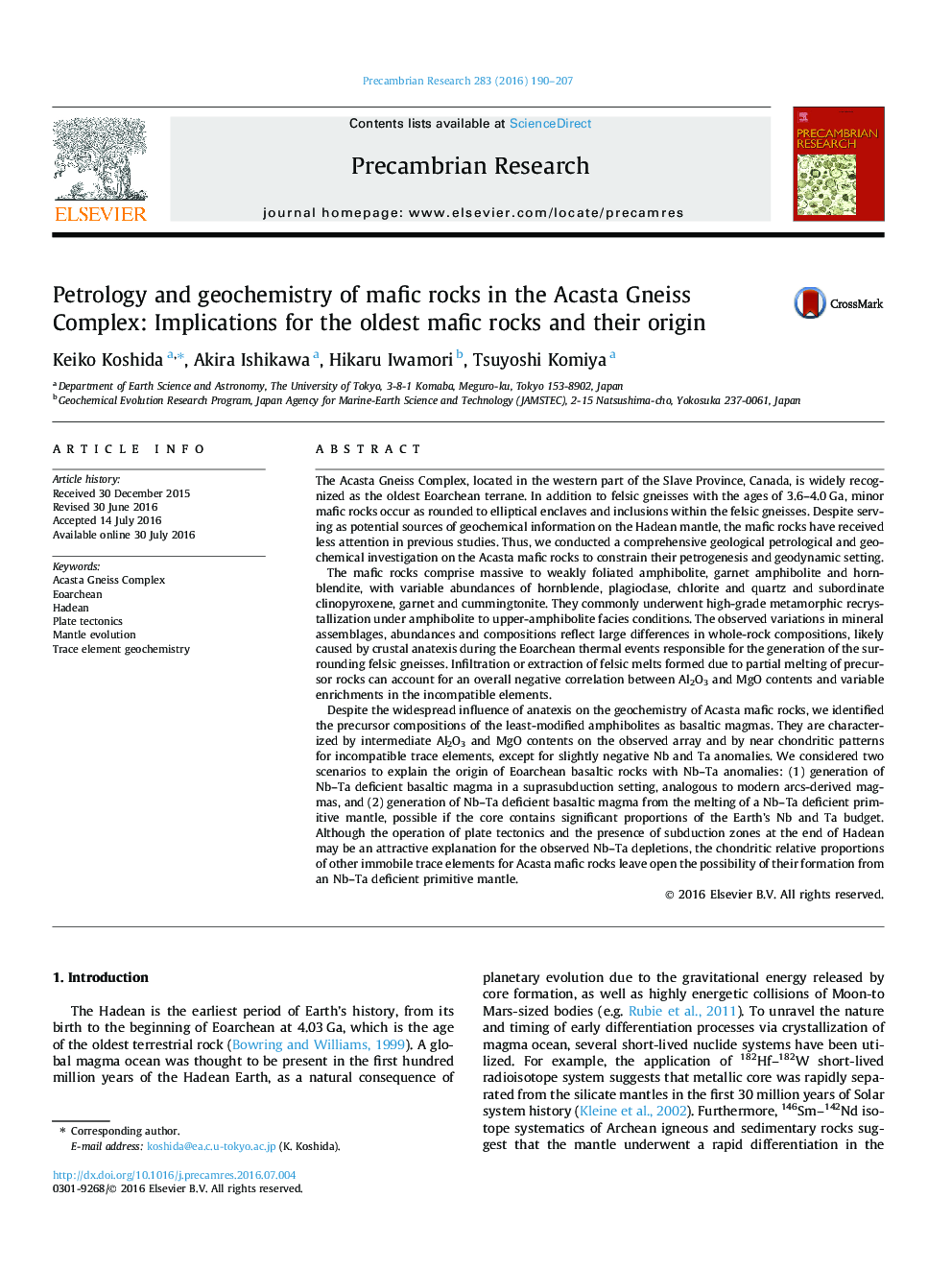| کد مقاله | کد نشریه | سال انتشار | مقاله انگلیسی | نسخه تمام متن |
|---|---|---|---|---|
| 4722330 | 1639592 | 2016 | 18 صفحه PDF | دانلود رایگان |

• Minor mafic rocks distributed over the Acasta Gneiss Complex were examined in detail.
• Major petrochemical varieties due to anatexis followed by amphibolite metamorphism.
• The least-modified rocks preserving basaltic magma compositions were identified.
• The source mantle has chondritic incompatible element ratios, except for Nb and Ta.
• Early Eoarchean Nb-deficit mantle probably originated from the Hadean core formation.
The Acasta Gneiss Complex, located in the western part of the Slave Province, Canada, is widely recognized as the oldest Eoarchean terrane. In addition to felsic gneisses with the ages of 3.6–4.0 Ga, minor mafic rocks occur as rounded to elliptical enclaves and inclusions within the felsic gneisses. Despite serving as potential sources of geochemical information on the Hadean mantle, the mafic rocks have received less attention in previous studies. Thus, we conducted a comprehensive geological petrological and geochemical investigation on the Acasta mafic rocks to constrain their petrogenesis and geodynamic setting.The mafic rocks comprise massive to weakly foliated amphibolite, garnet amphibolite and hornblendite, with variable abundances of hornblende, plagioclase, chlorite and quartz and subordinate clinopyroxene, garnet and cummingtonite. They commonly underwent high-grade metamorphic recrystallization under amphibolite to upper-amphibolite facies conditions. The observed variations in mineral assemblages, abundances and compositions reflect large differences in whole-rock compositions, likely caused by crustal anatexis during the Eoarchean thermal events responsible for the generation of the surrounding felsic gneisses. Infiltration or extraction of felsic melts formed due to partial melting of precursor rocks can account for an overall negative correlation between Al2O3 and MgO contents and variable enrichments in the incompatible elements.Despite the widespread influence of anatexis on the geochemistry of Acasta mafic rocks, we identified the precursor compositions of the least-modified amphibolites as basaltic magmas. They are characterized by intermediate Al2O3 and MgO contents on the observed array and by near chondritic patterns for incompatible trace elements, except for slightly negative Nb and Ta anomalies. We considered two scenarios to explain the origin of Eoarchean basaltic rocks with Nb–Ta anomalies: (1) generation of Nb–Ta deficient basaltic magma in a suprasubduction setting, analogous to modern arcs-derived magmas, and (2) generation of Nb–Ta deficient basaltic magma from the melting of a Nb–Ta deficient primitive mantle, possible if the core contains significant proportions of the Earth’s Nb and Ta budget. Although the operation of plate tectonics and the presence of subduction zones at the end of Hadean may be an attractive explanation for the observed Nb–Ta depletions, the chondritic relative proportions of other immobile trace elements for Acasta mafic rocks leave open the possibility of their formation from an Nb–Ta deficient primitive mantle.
Journal: Precambrian Research - Volume 283, September 2016, Pages 190–207